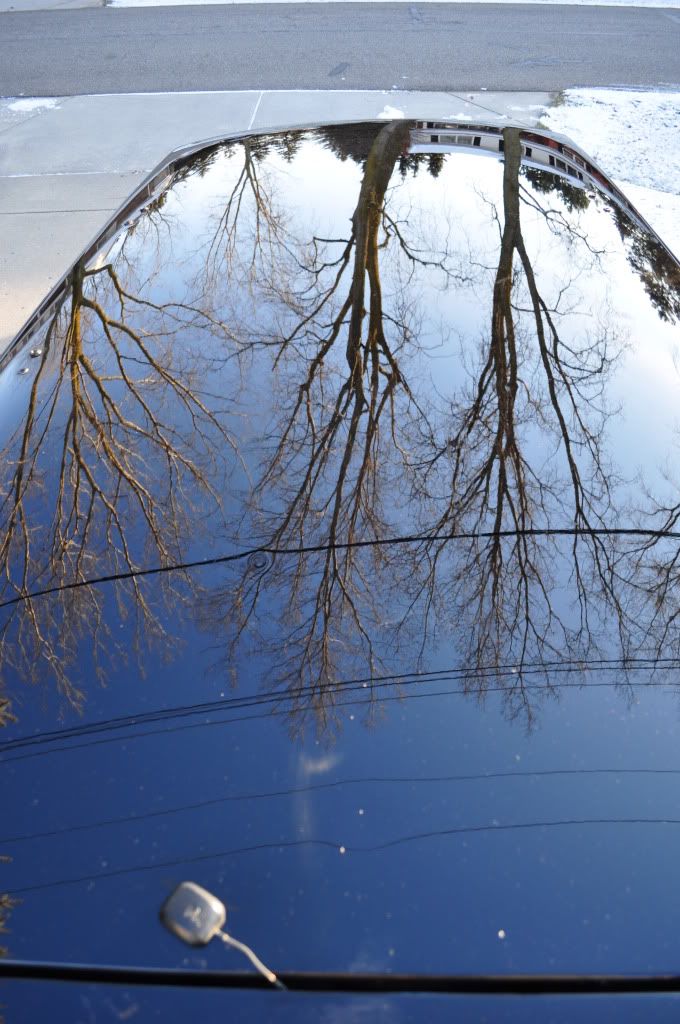Well I'm just in the first stages of my first exterior buffing/polishing, and I've come across something I haven't been able to find much relevant information about, so I thought I would ask the expert!
The vehicle in question is a 1992 Volvo 240 wagon, which I was unsure whether the paint is singe stage or base/clear.

I asked around, and received a variety of answers. So, I tried your test, How to Test for Single Stage or Clear Coat Paint, and concluded, as shown in that thread, that my paint was in fact base/clear.
So, I moved onto the first stage following a good washing, which was claying. The hood was pretty sticky,but after some time, it was like glass! The lower section of the door panels and quarter panels did not seem to have much above surface contaminants, however, when it got to the roof and upper door panels where it curves into the glass, that was a different story.

I went through more clay on the roof alone than I did on the whole rest of the car! After a lot of elbow grease and clay, I got the roof acceptable. There was still some black residue coming off the paint, but the clay was gliding very smoothly.
So, then I moved onto compounding with Optimum Compound II, my PC7424XP, and an orange pad. After I had completed one 2 x 2 section on the roof, I took a look at the pad and it's got black residue on it, just as the clay did. So I continue, just washing out my pad every 2 section, just thinking it's embedded dirt, as this car was rarely even washing in its 20 year life. Everything is going well, I'm getting the results I'm looking for for the most part, and I continue on. The roof is done with Compound II, so I switch to a white pad and Optimum Polish II, and the same thing happens! The pad is black again!

So what is it? Single stage paint after all? Embedded contaminants? Poor wash job prior to detailing? I don't think it's normal to have to wash my pad every 2 sections, and since I only have one which pad right now, this is going to take a longggg time at this rate.
Other than the black residue, the car is looking great! But I'm also noticing many more RIDS than I thought the car original had.
The vehicle in question is a 1992 Volvo 240 wagon, which I was unsure whether the paint is singe stage or base/clear.

I asked around, and received a variety of answers. So, I tried your test, How to Test for Single Stage or Clear Coat Paint, and concluded, as shown in that thread, that my paint was in fact base/clear.
So, I moved onto the first stage following a good washing, which was claying. The hood was pretty sticky,but after some time, it was like glass! The lower section of the door panels and quarter panels did not seem to have much above surface contaminants, however, when it got to the roof and upper door panels where it curves into the glass, that was a different story.

I went through more clay on the roof alone than I did on the whole rest of the car! After a lot of elbow grease and clay, I got the roof acceptable. There was still some black residue coming off the paint, but the clay was gliding very smoothly.
So, then I moved onto compounding with Optimum Compound II, my PC7424XP, and an orange pad. After I had completed one 2 x 2 section on the roof, I took a look at the pad and it's got black residue on it, just as the clay did. So I continue, just washing out my pad every 2 section, just thinking it's embedded dirt, as this car was rarely even washing in its 20 year life. Everything is going well, I'm getting the results I'm looking for for the most part, and I continue on. The roof is done with Compound II, so I switch to a white pad and Optimum Polish II, and the same thing happens! The pad is black again!

So what is it? Single stage paint after all? Embedded contaminants? Poor wash job prior to detailing? I don't think it's normal to have to wash my pad every 2 sections, and since I only have one which pad right now, this is going to take a longggg time at this rate.
Other than the black residue, the car is looking great! But I'm also noticing many more RIDS than I thought the car original had.






